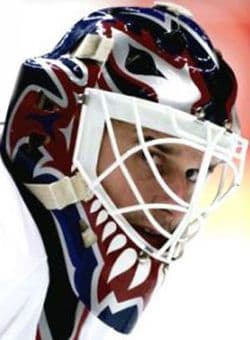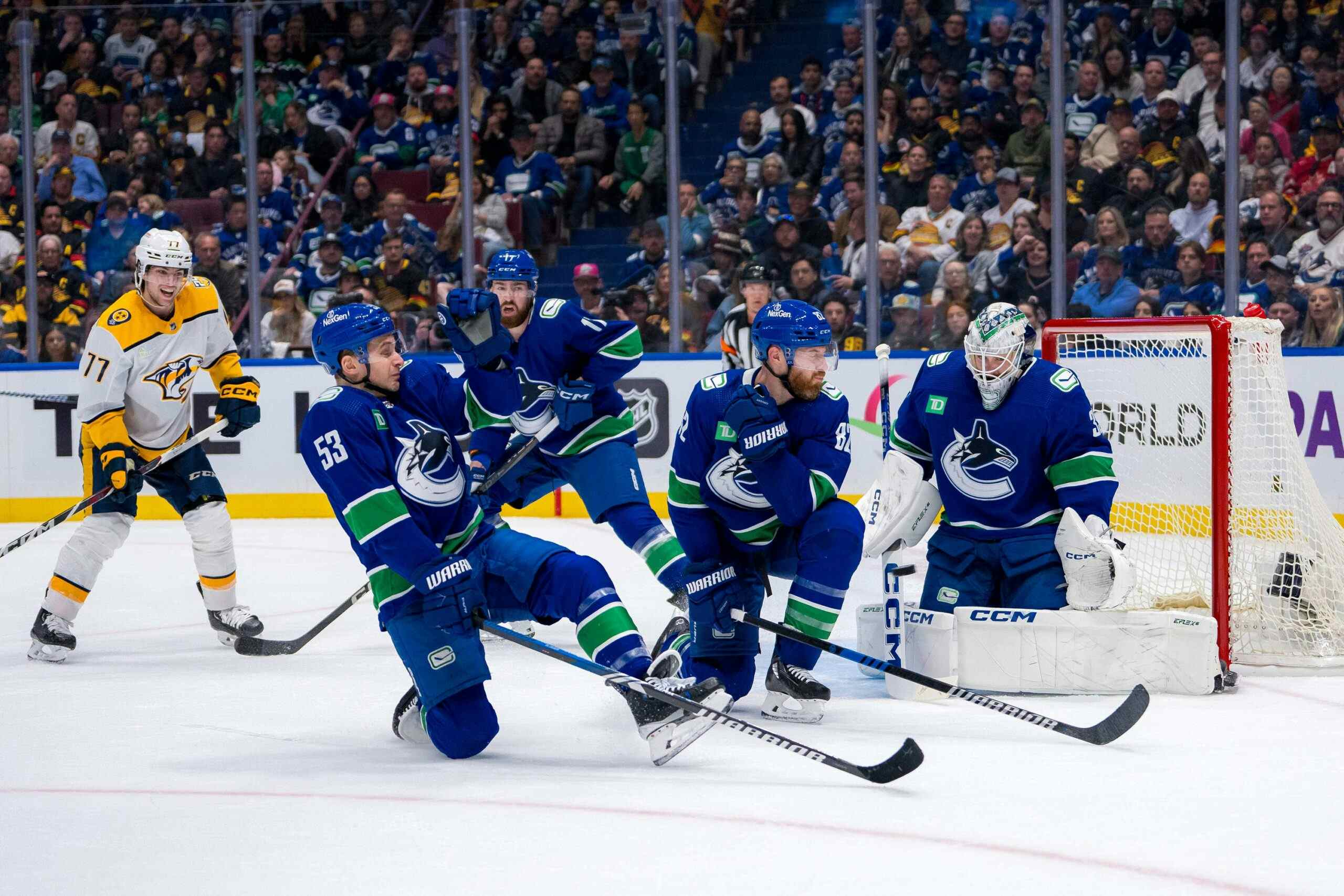The Man Behind The Masks: A Conversation With Mask Designer Greg Harrison (Part 1)

By Always90four
4 years agoOver the course of the Unmasking series, we’ve been able to get a glimpse inside the minds of former Canuck goaltenders and take a look behind the scenes at the stories that influenced their masks. What we haven’t gotten to do, at least until today, is talk to the man who designed them.
My chat with mask designer Greg Harrison was a lengthy one, filled with little details about the past and a secret about his future plans as well. This series has been all about the stories and Greg was more than happy to play the role of storyteller. Every goaltender would discuss possible ideas with Harrison but ultimately, Greg was left to his own devices and the rest is history.
Ryan Hank: From what I can tell you are the mask maker to the stars, how did this all begin for you?
Greg Harrison: When Terry Sawchuk first started to wear that mask that he had that Lefty Wilson made, I just loved the way that mask looked. Through a friend in high school, he played for the minor midget team when I played bantam and his dad had made his mask and I asked him to help me make one. He didn’t help me but he told me what he did and I did my best attempt at trying to make a mask which I didn’t have a clue what the hell I was doing.
I made that mask and I made a couple of other ones, not very well, and when I ended up meeting Roy Weatherbee who did the early pretzel mask for Favel and Parent and Dunc Wilson. He was in the Air Force and he made masks for these guys and he made [a pretzel mask] for his son and he made one for me.
He let me come by all the time and drop in and see him and let me pick his brain. He taught me the proper resins to use, what glass was best for strength and flexibility, combined with the resin which was a mix he concocted. I took it from there and started to make masks for kids and anybody that kind of wanted them.
I then worked at the Orwell Sports Camp for four summers. I was a goalie instructor there with (Jim) Rutherford and John Garrett and I made masks for kids and I did all the artwork at the camp. At the end of that summer, both Garrett and Rutherford decided they wanted to try one of my masks.
Rutherford wanted his to look like Giacomin, so I made the mask to look like Giacomin and I painted it blue for Pittsburgh. Then I started to not promote it, but I’d go to see goalies coming to town and they called me one time from Pittsburgh to make a mask for Dennis Herron. His mask had broken in half.
I had to deliver it to the Atlanta trainer at the time, they were in Toronto and would be in Pittsburgh a couple of days later. As a result, I got Meer, I got Belanger and prior to that, I had developed a style of mask that was my own. Some people refer to it as the Mike Liut style. Wayne Thomas was the first one I made in the NHL of that type and the other guys kind of followed.
Guys that had been used to wearing the [Ernie] Higgins mask out of Boston, the mask went under the chin, and I took that same angular mask that I did for Thomas and I designed one that had the same feel but it went under the chin.
RH: This was more of a hobby that became a profession at some point?
GH: Yeah, it was basically a hobby. Before I did Rutherford’s, the dream was to get one guy, one guy in the NHL. I got that in Rutherford and the same time as doing Rutherford’s, I did John Garrett’s. He was with the Portland Buckeroos back then.
RH: Way back!
GH: Long before he was in the NHL. It was a hobby, I did other jobs as well. I worked for four years at Cooper. I was their pro-rep from ’77 to ’81. They hired me because they didn’t have to introduce me to anybody, I was already dealing with a lot of the trainers. I walked into the job and they didn’t have to do much introduction there.
I had just developed the cage combination in ’77 with Dave Dryden and I had to watch myself because a lot of guys were wearing Cooper helmets and Cooper cages. I had to not cross the line. The one guy I really wanted to get in my mask was Tretiak, but I couldn’t, for obvious reasons.
RH: This all started for me as Canucks goalies, former Canucks goalies. Your name came up a lot and I thought, “how great would it be to have a chat with the guy that gave these guys their identity when it came to their masks?” I had McLean, Hirsch, Garrett. Is there a good story from these guys that’s worth telling?
GH: They all had their own stories. McLean wanted to try mine and it went through a lot of evolutions. The original mask that I did for him was a lot of yellow and then I changed it to white. It still had the logo on it and when they went to the skate design I was getting to the stage where I wasn’t putting logos on them anymore. I knew I couldn’t do anything with the images on the mask unless I got rid of the logos and did my own creation and design.
Most people assumed the logos were just stickers anyway, they were hand-painted. I wanted to get away from that and the skate one became the design, I just used the skate but I didn’t use the whole crest.
When they went to the whale-tail design, I had done Corey Hirsch’s the year before, the cage combination, with West Coast Indian art before they even announced that they were even going to go with that motif in a different colour but that feeling.
RH: I asked him about that. With the West Coast, it felt obvious but you got it before they made the change, I wondered if you had an inside track on it?
GH: No, not at all. I was always looking for something that would work. Whether it be my own idea or something to do with the city or something to do with the nickname of the team or the player’s nickname. In that case, it was a natural fit. When they changed to the maroon, silver and blue, I did McLean’s with the design on the side with the Scottish Rampart Lion that changed into a reworked Royal Bank crest. I just changed enough things but the feel was there.
Up top, there was a Tartan. I had done the Rampart Lion on the earlier mask and I have a picture, I took a bunch of pictures that I’m going to use in my book and McLean’s I shot it with a tartan and a set of bagpipes. Whatever the design is that’s behind the mask, that’s the background. I posted a couple of things: one was Felix’s mask inside the old television and the other was Bester’s mask on a beach for Orlando.
RH: So, the Felix Potvin one, my absolute favourite mask to this day. Walk me through that one. Obviously, Felix the Cat was the nickname but the way you designed that and I know it evolved after the first one, but maybe walk me through that one.
GH: Originally, I had done a mask for my daughter just to have. I did a mask like a Thomas-style or Liut one and I painted it very similar to makeup for the show “Cats”. I had a front cover from an entertainment magazine and this makeup on this particular actor really looked cool and it was similar and I changed a few things to make it fit better on the mask, but that initial Potvin mask, that’s what it was.
The next one, I wanted to add the teeth to, to make it look a little more vicious but then I put the feathering, like the whiskers on the sides but it didn’t show as well on television that I’d like. It was airbrushed around the whiskers but it didn’t stand out and for the most part that whole side looked kind of blue.
I decided to clean it up and the parts over the top of the cage are basically indications of the eye area of the cat and then the whiskers blended into the side once I did the teeth and then I made them more predominant. I used that as a basic form for wherever he went. Toronto was the whiskers, the Islanders on the side was the beam of the lighthouse, his Vancouver one is the fin of the fish, when he went to Boston it was the claw, when he went to L.A it was the crown on the side.
When he went with Team Canada, I blended it into a flowing Maple Leaf. Unfortunately, that got stolen out of my shop. Someone came in the front of my shop one day, I went out next door to my mechanic friend and I heard something next door and I when I came back and there was nobody in the shop at that point.
When I looked later, there was light coming in from the back door as the sun came down and I knew I hadn’t gone through the back door. Lots of snow out there and there’s a set of footprints leading away and the mask was gone and my wallet was gone.
The deal was, I would make him one (Potvin) for the World Championships but I wanted it back, I wouldn’t charge him for it but I wanted it back and I got it back, but I lost it.
That’s basically the story of Felix’s mask.
RH: Didn’t he have the winking face of Felix on the back as well?
GH: I put that on once I started to go with the streamlined design that you could see the whiskers on the side. It started from that point. Normally, I have a triangle on either side of the strap and with Felix’s there’s only one triangle because the Felix takes the spot of the one ventilation hole.
———————————————- ——————————————– ——————————————–
That’s the end of part one of this conversation. In the next installment, Greg talks about the esthetics of the mask, some of his favourites, the customization process and the Rocketeer! There was no shortage of information given after all these years and Greg had some juicy stories to chat about.
Stay tuned for the next part of my conversation with mask maker extraordinaire, Greg Harrison.
Recent articles from Always90four





